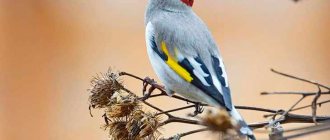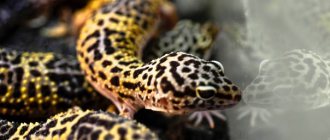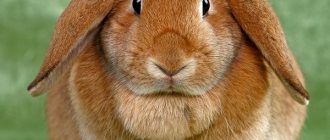Origin story
The axolotl is a neotenic larva from the Ambystomaceae family. Translated, the name means “water monster”, but it is difficult to call an axolotl a monster - the salamander larva has a truly touching and funny appearance.
A feature of the salamander is the ability to reproduce while still a larva - this is the meaning of neoteny of water dragons. This phenomenon is due to the fact that this amphibian lacks the hormone responsible for the development of the body. In other words, the axolotl and the ambystoma are the same animal, at different stages of development.
In the wild, axolotls live constantly in the water, ignoring land. The favorite place of water dragons is the center of the lake, where dense vegetation grows, helping axolotls reproduce and hiding them from enemies.
In ancient times, the meat of the aquatic salamander was attributed with healing properties, so the Indians caught the poor dragons and ate them. Now this lizard is protected and is listed in the Red Book.
Keeping an axolotl at home
Axolotls are increasingly being kept in home aquariums because these creatures are easy to keep and very interesting to watch. In addition, the content of an axolotl has an image aspect: not all people know about the existence of such animals, the word “axolotl” itself sounds mysterious, and a story about the unusual life form of your pet will definitely create an aura of an extraordinary and highly educated personality for its owner.
All an axolotl needs to be happy is clean water, dim light and quality food. Since at the larval stage amphibians live in water, the axolotl does not need land at all. His six shaggy “ears”, reminiscent of thin branches of aquatic plants on the sides of his head, are not ears at all, but external gills with which he breathes. Although it also has lungs, so if living conditions change, the larva will quickly be able to adapt and “adjust” to pulmonary breathing. The flat, wide and long tail makes the axolotl an excellent swimmer. However, more often he prefers to be at the bottom of the aquarium, waiting for the food to float into his mouth.
The axolotl is fed based on its predatory nature. He especially respects bloodworms and earthworms, cleared of soil and cut into small pieces. Raw meat is also suitable - beef, veal, poultry - but it is advisable to “deliver” it with tweezers directly to the axolotl’s nose. The larvae have a tendency to gluttony, so it is worth dosing out their “ration”: a couple of worms twice a week for an adult axolotl, for a young axolotl up to a year - every other day, and only the young shoots are fed daily. But here you need to be vigilant: a hungry axolotl will start hunting for small aquarium fish, or even snatch off the paw of one of its own kind.
Description
In aquariums, the axolotl is often referred to as the larva of the Mexican Ambistoma, but in fact, the aquarium dragonfish is the larval form of any variety of Ambistoma.
The length of the aquarium water newt reaches from 15 to 30 cm, sometimes large individuals grow up to 45 cm. The approximate weight of the dragon is 300 g, with males slightly larger than females.
Description of the appearance of the dragons:
- The body is disproportionate: a large head and an elongated, laterally compressed body, a long tail.
- On the back of the dragon there is a crest that acts as a fin.
- There are three pairs of gills on the head, which protrude like horns.
- The eyes are small, round, resembling dark beads. The mouth is wide, so outwardly the Mexican water dragon always looks smiling.
- The dragon's body is covered with smooth skin.
- The animal has 2 pairs of paws: the front ones have 4 toes, the others have 5.
Different breathing methods are considered unique features of aquatic lizards: the salamander larva breathes using lungs, gills and skin. In addition, keeping an axolotl in an aquarium is interesting because water dragons can restore body parts: fins, paws and organs.
Before purchasing a strange amphibian, many aquarists think about how long a water dragon lives. The life expectancy of an axolotl under favorable conditions is 15-20 years.
Mr. Tail recommends: description and natural habitat
Axoloti is essentially an intermediate stage of development of some species of ambistoma, most often Ambystoma mexicanum. This larva - neoteny - is capable of reaching sexual maturity in this state without moving to the next stage of development, never turning into an adult form.
The literal translation of the word “axolotl” is “water dog”, which is an analogue of “monster”, “dragon”. This is what the Aztecs called this oldest creature on Earth. There are also such versions of translation from the Nautal language as “God of destruction and death”, “Playing in the water”.
The ambystous axolotl is prevented from undergoing metamorphosis and moving from an aquatic larval form to an amphibian tailed one due to a lack of the hormone thyroxine.
In principle, by creating appropriate environmental parameters or introducing special substances into the axolotl’s body, such a metamorphosis is possible. But it is better not to start this experiment at home, so as not to destroy a unique creature.
Ambystoma mexicanum or Mexican Ambystoma is an endemic North American species of mole salamander.
Axolotls first became laboratory specimens for biologists before becoming aquarium creatures in the early 19th century.
In nature, axolotls still live in Mexico's lakes Xochimilco and Chalco, calm reservoirs of some American states, for example, in southern California, Florida, and others up to the Great Lakes.
Their favorite place is fairly cold water bodies, where they prefer to spend time at the bottom in thickets of algae.
The appearance of a water dragon is not at all intimidating. The flexible narrow tailed body reaches a length of 35-45 cm, on the sides of the flat head with small eyes there is a corolla of three pairs of gills. This creature can breathe them underwater, and its lungs allow it to remain calmly on the surface, inhaling atmospheric air.
If an axolotl is out of water for a long time, the gills atrophy; when they return to the aquatic environment, they regenerate.
The mouth is so large that it seems that the axolotl is always smiling, apparently this is what gives it such a good-natured and peaceful appearance. There is a leathery ridge along the back, further enhancing the resemblance to a dragon.
Axolotl photo gallery:
With the help of a well-developed tail, they easily move under water, and their paws end with fingers, which are convenient for clinging to the ground at the bottom of the reservoir. Although these creatures do not like to move quickly and lead a rather sedentary lifestyle.
These are definitely predators, like any amphibian larvae, capable of reproducing and living up to 12-15 years.
Types and colors
Both the larval form and the adult axolotl have gained popularity among fans of exotic pets, so this amphibian is divided into several varieties:
- Mexican - has a natural color that allows it to hide from predators in algae and plants.
- The white axolotl is an amphibian with light skin and dark brown eyes. As it matures, this species develops a brown stripe on its back. If a white dragon transforms into an adult ambistoma, then the color can be any.
- Albino axolotl - these representatives can be colored milky or golden, with golden spots along the body. Even after maturity, the variety retains its original color.
- Harlequin is a variety obtained as a result of genetic experiments when scientists crossed a white and brown axolotl with each other.
- Black dragon - thanks to the efforts of scientists and researchers, we managed to get a black axolotl that looks beautiful and menacing. Also among the representatives there are dragonets with a two-color color.
Interesting fact: the image of the main character of the cartoon “Luntik and His Friends” is copied from a salamander larva.
Axolotl colors
These cute and funny creatures can be colored differently by Mother Nature. The coloring depends on the population (or artificially bred line), as well as on the conditions in which the larva lives. Including food. Axolotls are usually divided into 3 types of color.
- “Prirodniki” is black or simply dark (gray, brown, brownish, marsh) color with spots. The pattern on the body can be different: small, large, reminiscent of a mesh.
- White, but not albino - the light color in adulthood is complemented by a patterned pattern along the back. An amphibian may not necessarily be pure white; pinkish and beige shades are often found. The gill filaments are not red, but deep pink. Eyes black or brown.
- "Albs" - without pigment. Completely white, without spots or patterns, with bright red gill processes and eyes. Among albinos there is also a golden color.
This is interesting! As a result of crossings, axolotls are produced in a wide variety of colors. Scientists experimenting with GMOs have achieved that under a fluorescent lamp the larvae's spots and stains on its body glow.
Natural and white axolotls come in a wide variety of colors and patterns, especially those that have been bred at home or in a laboratory. In their natural environment, darker colors predominate because light-colored individuals are more vulnerable to predators and survive less well.
Keeping in an aquarium
Keeping an axolotl at home requires careful attention from the owner and setting up an aquarium for the axolotl. Ideally, each amphibian should be provided with a separate tank with a capacity of 50 liters or more, but you can also put a couple of dragons in one container. If two dragons live in the same artificial pond, both pets should be the same size - this will help avoid cannibalism and injury. Accordingly, when two water dragons are introduced, the size of the aquarium increases.
In addition to the spacious container, the care and maintenance of the axolotl involves the following nuances:
- Soil - experienced owners recommend using large pebbles as a substrate, since pets can swallow smaller soil, which will lead to the development of diseases.
- Aquatic environment – the temperature of the aquarium liquid should be 15-20C. If the number of degrees is lower, the pets will lose mobility and the development of the axolotl will slow down. At elevated temperatures, these amphibians feel uncomfortable and experience severe discomfort, which can result in the death of the pet. Hardness and acidity levels must be maintained by the owner at a neutral level. The water is changed daily, renewing 1/8 of the container volume, and a complete change is carried out once every three months.
- Flora - given that water dragons prefer to live in cool water, living vegetation is planted that is resistant to cold. Sagittaria, Nayas, Ludwigia, and Cladophora are good choices for an axolotl tank.
- Lighting - the type and brightness of lighting does not play a special role for the amphibian, since water dragons have poor vision.
- Filter and aerator – when choosing equipment for an aquarium, you should know that water dragons are very untidy and leave a lot of dirt and debris in the pond. Therefore, choose a powerful filter and aerator that can cope with heavy contamination.
Having learned how to care for an axolotl, you should become more familiar with the intricacies of feeding at home.
Keeping a Pet Monster
Axolotls live in the Mexican lakes Xochimilco and Chalco, which is why they received another name - “Mexican dragon”. They prefer deep waters with dense vegetation, where they lay eggs, and rarely come to land. Therefore, for comfortable keeping it is necessary to create conditions that are as similar as possible to natural ones. With proper maintenance and design of the aquarium, larvae can live up to 20 years.
We recommend reading
Keeping aquarium shrimp and fish
The water temperature should not exceed 24°C. 21–23 degrees is considered optimal. Elevated temperature leads to accelerated metabolism and, as a result, a decrease in life expectancy, illness and death.
Without a substrate, dogs will not be able to move normally along the bottom. therefore the soil is important. Gravel is strictly unacceptable, as dragons often swallow it. The ideal option is fine sand, which will not clog the gastrointestinal tract even if accidentally swallowed.
For a maximum of two individuals, you need an aquarium of at least 100 liters, and the bottom area should be twice the size of the axolotl. The lid on the aquarium does not matter. If there are other neighbors, the volume should increase at the rate of 70 liters for each individual.
Nutrition
Before purchasing an aquatic lizard, many aquarists think about what this strange amphibian eats. Water dragons are predatory creatures, and in their natural habitat they eat ciliates, zooplankton and crustaceans, preferring protein foods.
What to feed an axolotl:
- Earthworms, bloodworms.
- Tadpoles, daphnia, cyclops, brine shrimp.
- Slugs, small fish, snails.
- Purchased food for predatory fish.
It is important to note that you cannot feed your pet mammalian meat, since this product is not digestible by the amphibian body. Dragons are given food once every 2 days.
Interesting fact: these amphibians take a long time to digest their prey, so they can go without eating for 2-3 weeks without harm.
Keeping a Water Dragon
An adult axolotl will be comfortable in an aquarium with a volume of at least 40 liters. 3-4 water dragons will fit perfectly in a 100-liter container. The aquarium is installed in a cool room and should not be exposed to direct sunlight.
There are two things you should not do when keeping axolotls: keep your pets in close quarters and overheat the water. Elevated temperatures are detrimental to them. Under natural conditions, they live in cold mountain lakes, so the water temperature in the aquarium should be about 18-20° C.
Important: temperatures above 24° C can lead to illness and death of the amphibian. If the apartment is too warm, you will need a cooling system.
Since aquatic dragons are very sensitive to the purity of water and its oxygen saturation, filtration is necessary in the aquarium and aeration is desirable. Partial water changes should be carried out at least once a week.
Axolotls require hard water to keep them. Soft, and especially distilled, is absolutely not suitable for them. Ordinary tap water is pre-settled for several days or purified using special conditioners (for example, Avera). The pH value should be in the range from 6.5 to 8.
An amphibian's home needs soil - without it, the axolotl will not feel very comfortable. As such, it is better to use pebbles no smaller than 1.5-2 cm in size. The salamander does not particularly need live plants, but you can decorate the aquarium with artificial ones.
Axolotls love dark places, so the aquarium is equipped with all kinds of shelters. You can place driftwood, large pebbles, pots or coconuts in your ward’s home. But remember: Mexican salamanders have very delicate skin, so there should not be any pointed objects in the aquarium.
Compatibility
Keeping an axolotl in a pond with other inhabitants of the underwater world is impossible for the following reasons:
- Amphibians are active at night, and, being predators, will attack sleeping fish.
- Temperatures suitable for keeping water dragons are not suitable for many phenotypes.
- When a cute dragon is introduced to predatory fish, aggressive phenotypes can attack the amphibian and damage the latter’s prominent gills.
- Adult salamanders should be kept separate from small dragons, as the species is prone to cannibalism.
Axolotl diseases and their signs.
The health of your pet axolotl depends on the conditions in the aquarium. Violation of the temperature regime, improper feeding, and water pollution often lead to a number of dangerous conditions:
- intestinal obstruction is caused by swallowed foreign objects (sand, gravel), as a result of which the larva stops feeding and intensively loses weight. After being examined by a veterinarian, surgery may be necessary;
- Metabolic diseases of cartilage tissue are caused by a lack of calcium and vitamin D in the body. The first sign of illness is lethargy, inactivity of the axolotl, as well as swelling of the body and paws. Treatment of the disease should be prescribed by a specialist;
- Anorexia can be caused by various infections, parasites and a monotonous diet. The axolotl refuses food, and its body becomes noticeably swollen. Treatment consists of feeding the animal a special composition of egg yolk, granulated pollen and crushed tablets of calcium gluconate and glycerophosphate;
- Ascites is a metabolic disorder in an animal’s body, which is caused by bacteria from poor-quality water or food, as well as high water temperature. The axolotl becomes lethargic, loses appetite, and its abdomen swells. The disease is infectious, so the sick individual is removed, and a specialist is treated with antibiotics and diuretics.
According to the owners, axolotls are easily tamed, recognize their feeders and are happy to be handled. Animals must be handled very carefully, because axolotls have cartilage tissue instead of bones, which can be accidentally injured. You need to be prepared for the fact that, when frightened, an animal may bite your finger, but it will not cause serious sensations or damage.
Reproduction
Water dragons are able to reproduce independently in a tank in the presence of stimulating factors:
- Reducing the length of daylight hours.
- Gradual decrease in temperature.
Amphibians reach sexual maturity at the age of one year. You can distinguish a male amphibian from a female one by the shape of the cloaca: in girls it is invisible, in boys it is convex. The gender will also tell you the size of the axolotl: male representatives are larger than female ones.
After spawning is stimulated, lizards engage in mating games, during which the male releases sperm and the female collects it. Amphibian eggs are laid on plant leaves, after which the parents are removed from the container to preserve the eggs.
After three weeks, larvae appear, similar in appearance to fish fry. After 85 days, the babies take on the appearance of an adult amphibian. Small axolotls are fed microworms and daphnia, and as they grow older, they are transferred to an adult diet.
Axolotls are amazing creatures whose appearance is similar to mythical dragons. Having acquired a water dragon, it is important to properly care for and care for the salamander larva, and then the exotic pet will live a happy life.
Feeding the axolotl
The axolotl, despite its outward meekness, is a predator, and quite picky in its food. The first days of their life, the larvae feed on yolk reserves, and then move on to small crustaceans. Next they are fed with cyclops or daphnia, and later small bloodworms and tubifex are added.
Grown-up dragons happily eat beef and veal liver and meat (they should be cut into pieces and bones, tendons and fat removed from them).
Animals do not take food from the bottom. You need to move long tweezers in front of their muzzle, in which a treat is clamped. They give as much food as the water dragon will eat.
The diet is varied with earthworms, fish, crickets, tadpoles or newborn mice.
Adult axolotls are fed every other day, juveniles - daily.
Reproduction of water dragons
Axolotls reach sexual maturity at 10-12 months. By this time, males acquire a cloacal swelling at the base of the tail. In females there is no such swelling or almost no swelling.
The female lays eggs 2-3 times a year, males can be used more often. The couple is seated together in the evening and left overnight. If the partners are attractive to each other, they begin mating games. Their fertilization is internal, although there are no special copulation organs. Fertilization occurs as follows: the male places on the ground from 1 to 20 transparent gelatinous pyramids consisting of sperm, and the female, floating above them, draws them into the cloaca. After a few hours, she begins to lay eggs on the leaves of aquatic plants. There can be up to 800 eggs. The eggs hatch into larvae.
Kinds
In nature there is 1 variety of axolotl - Mexican. An unusually beautiful, intelligent larva adapted to various conditions gives birth to offspring when it is very young. The Mexican water dragon is dexterous, cunning, and playful. It is a larva of Ambystoma mexicanum, found in Mexico.
The black axolotl is a subspecies. Just like its brother, it reproduces as a larva. Axolotls of this subspecies are kept in water at room temperature. The freshwater resident is not so active, he is calmer.
The black water dragon is peaceful, but can bite its fellow limb, so the breeder needs to be extremely careful! If no dirt gets into the wound, regeneration will occur quickly. The color of the body depends on the genetic characteristics of the larva. When the genes change, the axolotl transforms, acquiring its characteristic body color.
Wild varieties of this amphibian are dark green, they have golden or blackish dots on the surface of the body. Light-colored larvae are a rare phenomenon. Such axolotls have very developed protective functions. Light-colored individuals are the most vulnerable.
At home, they often keep light pink amphibians with dark eyes. Albino axolotls are pinkish in color and have red eyes. Golden water dragons have eyes the same color as their bodies. Black axolotls are also very popular. Light-colored individuals are usually spotted.
Tiger ambystoma is an animal that appeared as a result of mutation. The size of its body reaches 27 cm (including the tail). The tiger ambystoma has an olive body with characteristic spots or stripes.
This animal prefers to stay awake at night. During the day it hides, and in the late evening it begins to hunt mollusks. Albinos tiger ambystoma were obtained unnaturally. The gills of such animals are deep red.
The marbled axolotl is a truly unique creature. Its black body is covered with marble-like stripes. This variety of Ambystoma is relatively small, the average size of an individual is only 11 cm.
The animal leads an isolated lifestyle, it hides in coniferous and deciduous forests, and often lives in burrows. The marbled ambystoma loves to eat worms, snails, and centipedes.
The yellow-spotted axolotl ambistoma is distinguished by bright yellow spots on the surface of the body. But some specimens of this species do not have characteristic spots. The animal prefers to hide in holes, but often crawls out when it rains.
Content
If you decide that you need an extraordinary axolotl, which is no longer so difficult to buy today, then it’s time to find out how to care for it.
The Mexican water monster will take root well in a small aquarium.
The volume of water is calculated based on 30 - 40 liters per individual. He doesn't need high temperatures.
In the warm season it should not exceed 21 °C. The lower limit is 15 – 18 °C.
If you don’t have enough time to care for your pets, but want to have a living creature nearby, take a closer look at such an exotic animal as the axolotl, its maintenance is not at all difficult.
You can find out about another unpretentious inhabitant of the aquarium here:
The big-headed Mexican will be grateful for:
- aerated aquarium;
- regular water filtration;
- timely nutrition.
And, of course, he needs your attention. Place the aquarium in the place where you are most often.
The difference between the female and the male is obvious: the lady, as it should be in the natural world, is a little thicker, and the successor of the family has tubercles at the base of the tail. One-year-old axolotl is ready to breed
Food for axolotl
What and how much does the axolotl (ambystoma larva) eat? Since water dragons are predators, they prefer protein-based food. Varieties of submersible predator food that come in tablet or granule form work well for them. The albino axolotl really likes shrimp meat. Also, all representatives of this individual love to eat mussels, fry, and fish fillets. They won’t refuse an ordinary earthworm either. You just need to cut it first.
Such an individual should be fed like ordinary fish: do not feed too much, so as not to overeat. It is advisable to remove all remains from the aquarium immediately, since they very quickly begin to disappear, rot and turn into toxic substances. Mammalian meat is contraindicated for axolotls. Although it contains a lot of protein, the stomach of these creatures cannot handle it.
Large representatives of this species need to be fed three times a week, but newborn larvae should be fed every day.
Reproduction and lifespan
The larva, 6 months old, is sexually mature. The length of its body does not exceed 25 cm. The mating season of the water dragon begins in March or September. For the larva to reproduce well, the water temperature must be within + 20 degrees.
One male, as a rule, fertilizes 3–4 females. After this, the females lay eggs that look like fry. After 7 - 8 days, they reach a size of 1.5 cm. One-month-old larvae grow 8 cm. An axolotl, which is 10 months old, acquires sexual characteristics. Males are usually larger than females.
Axolotl fry have very small gills. 7 - 8 days after birth, the paws on the back of the cubs form, and after 3 months the front legs develop. During the period of active development, the fry should be well fed, but they should not be given too much food, since the metabolism may be impaired. First, it is better to feed them ciliates, then gradually add them to the Cyclops’ diet (at first the cubs eat small ones, then they switch to large ones).
After some time it will be possible to adapt to bloodworms. Young larvae need to be fed in the same way as adults. Fry in new conditions lose their gills and folds. If an axolotl turns into an ambistoma, it usually molts. The animal changes color, the ridge located on its back becomes rounded.
Biologists believe that the color of fry depends not only on genes, but also on the level of lighting. A water dragon kept under red light becomes darkish. In natural reservoirs, axolotls live up to 19 years!
Sex determination and reproduction of axolotls
Axolotls begin to mature from six months and by one year all healthy individuals are able to give birth to offspring. Females are slightly smaller and rounder than males. By the eighth month, males will develop a significant lump under the tail, while females will only have a slight lump. The mating season is in spring and autumn, so spawning can be stimulated by gradually lowering the temperature by 3-4 degrees for a couple of weeks and seating the couple. After connecting the producers, gradually raise the temperature back and replace it with softer water (imitation of spring). The male sprays the spermatophore into the water, after which the female collects it and after a day or two lays already fertilized eggs. Females lay up to 1000 eggs. The eggs attach to the plants. Together with the plants, the caviar is transferred to a vessel with clean, settled water, as the producers will enjoy it with pleasure. The eggs develop in about 14-16 days. The larvae emerging from the eggs begin to feed after the yolk sac is reabsorbed - cyclops and daphnia, later bloodworms, cut earthworms, and then they are taught to eat meat.
- Axolotl boy and girl
- Axolotl caviar
- Axolotl larvae
Aquarium decoration
This is largely a matter of the owner's taste, although some rules should be followed. Small (young) individuals can be kept in small containers (50 liters). Adult lizards require a larger volume (100 liters for one or two individuals). If you want to keep a larger number, then the volume of the aquarium should be 50-80 liters for each axolotl.
The decor of the aquarium should not have sharp burrs and edges - they can injure the delicate skin of your pet. Also, take care of shelters. There should be more of them than the number of individuals kept.
Appearance
The amphibian axolotl, whose price is lower than, for example, a leopard gecko, looks cute, as is typical for a child.
The main decorations of the unusual creature:
- large wide head with lush tufts of external gills;
- wide, constantly smiling mouth;
- a tightly knit body covered with delicate skin;
- beautiful comb on the back;
- flat tail;
- 4 thin legs.
The predator axolotl is motionless most of the time. He, as he does for hunters, waits for his prey: a gaping snail or a worm. It takes 2-3 days for him to digest food.
The Mexican water monster delights with different colors.
In nature, only black and brown colors are found, but axolotls of the following colors have taken root in amateur aquariums:
- black;
- grey;
- brown;
- brown-green;
- albino form.
No matter what color the axolotl is, photos of cute dragons always look amazing.
Computer game developers take full advantage of this unearthly appearance: they created characters that look like axolotls.
The axolotl has a phenomenal ability to regenerate. Scientists are studying this fact, and perhaps this cute creature can help people











